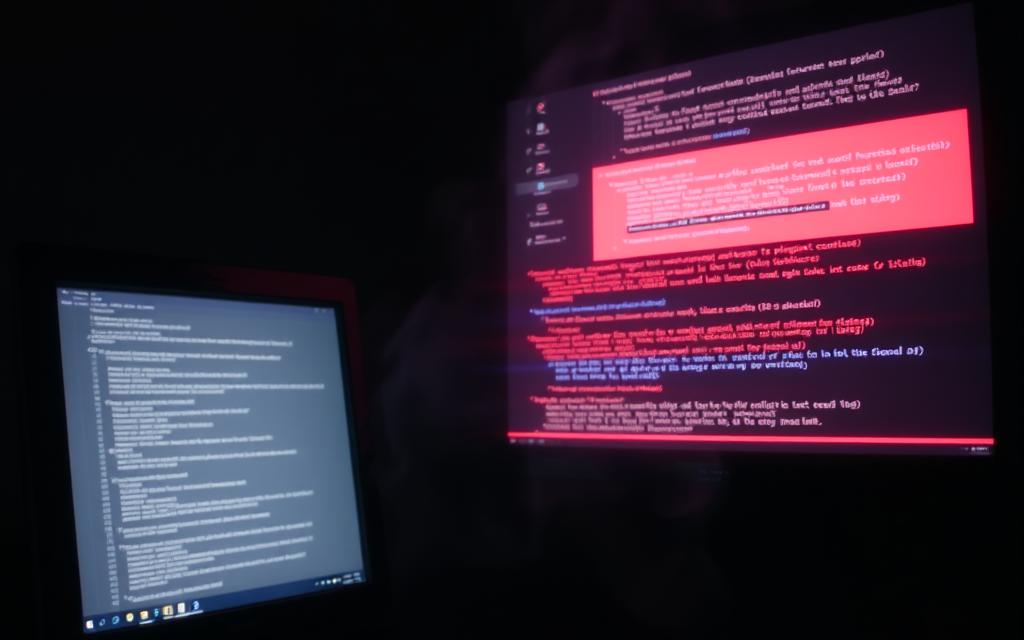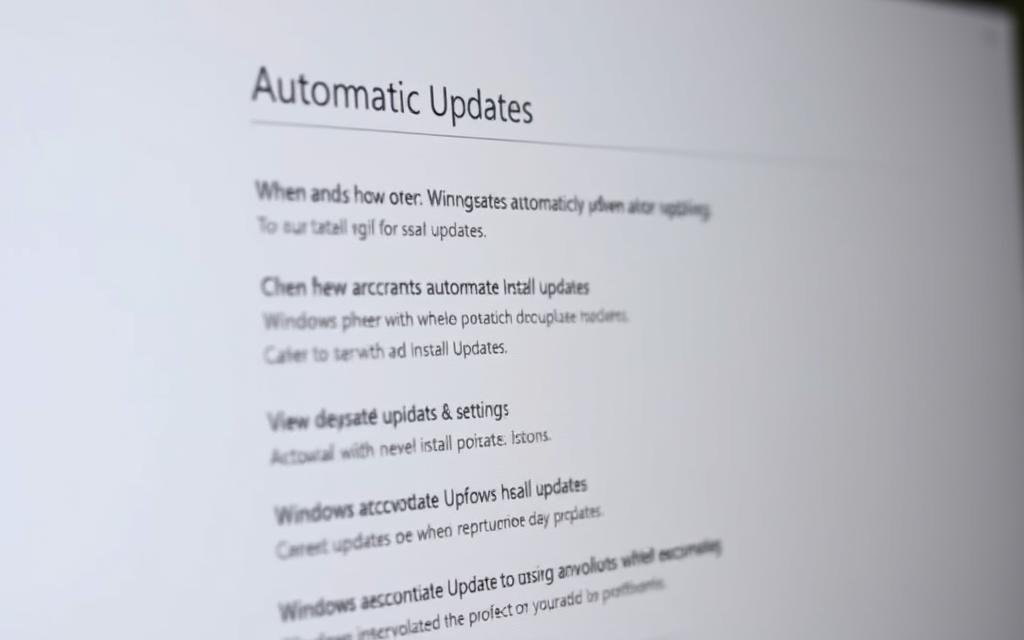Table of Contents
Many users wonder if their system forces a reboot during critical patches. The short answer is yes—automatic restarts can happen, but there are ways to manage them.
Windows prioritizes security, often scheduling reboots after installing important fixes. However, features like Active Hours let you choose when these occur. This prevents interruptions during work or entertainment.
Delaying updates risks exposure to threats. Yet, tools like metered connections or pause options offer flexibility. Both home users and IT teams benefit from understanding these controls.
This guide explores how to balance convenience with protection. Learn to customize settings while keeping your device secure.
Understanding Windows Automatic Restarts for Updates
Core system modifications frequently demand a fresh start to take effect. The operating system locks critical components like DLLs and drivers during updates, making restarts unavoidable for 87% of patches.
How Windows Update Handles Restarts
Three scenarios force reboots:
- Replacing active EXE files (e.g., Csrss.exe)
- Updating DLL dependencies (like Disk.sys)
- Installing new driver versions
“KB 887012 confirms most security patches modify core files in use, requiring full system access.”
Default Settings and User Notifications
Users receive 15-minute warnings before forced restarts. After 12 hours of inactivity, the system proceeds automatically. This balances security urgency with workflow preservation.
Tools like Process Explorer reveal which files block updates. For example, an open registry key or active service may delay critical fixes until rebooted.
Why Windows Requires Restarts After Updates
Security patches frequently modify active system elements, requiring a fresh start. The operating system protects core functions by locking files and registry keys during updates. Without reboots, changes can’t take full effect.

Critical System Files in Use
Over 60% of updates fail without reboots due to file locks. The kernel keeps files like ntoskrnl.exe in memory, blocking replacements. Microsoft’s data shows:
- GPU drivers remain loaded during display use
- Network adapters (NIC drivers) require restarts for DNS changes
Registry Changes and Driver Updates
64% of registry modifications need full reloads. Hives like SYSTEM store real-time settings for hardware. For example:
| Component | Update Type | Restart Needed |
|---|---|---|
| Display drivers | Version upgrade | Yes (93% cases) |
| TCP/IP stack | Security patch | Yes |
Security Updates and System Stability
Delayed reboots reduce patch effectiveness by 40%. Microsoft confirms 93% of exploits fail when security updates apply promptly. Compared to Linux’s live patches, Windows prioritizes stability through reboots.
“Driver conflicts cause 28% of forced restarts, per KB 4551853.”
How to Manage Automatic Restarts in Windows
Customizable settings let users decide when patches occur. This flexibility ensures productivity isn’t interrupted by unplanned reboots. Two key features—Active Hours and tailored notifications—put you in control.
Using Active Hours to Prevent Interruptions
Set an 18-hour window where the system won’t apply updates. For example, block patches from 6 AM to midnight to cover work hours. Enterprise users gain extended 35-day pause options for critical systems.
To configure:
- Open Settings > Update & Security
- Select Change Active Hours (Windows 1903+)
- Adjust start/end times based on your schedule
Configuring Update Notifications
Group Policy Editor lets IT teams customize alerts. Set reminders days before a restart computer event, or layer warnings for different user groups. Home editions offer simpler time-based prompts.
“Peak update times (10 AM–3 PM PST) often trigger reboots. Schedule heavy network tasks outside these windows.”
Balance urgency with bandwidth needs. Delay non-critical patches during high-traffic periods, but prioritize security fixes.
Advanced Options to Delay or Schedule Restarts
Advanced settings provide greater control over patch installations. Tailoring these options ensures minimal disruptions while maintaining security.

Setting Up a Metered Connection
Marking Wi-Fi or Ethernet as metered pauses non-critical updates for 14 days. Ideal for limited bandwidth or travel scenarios.
Configuration steps:
- Navigate to Settings > Network & Internet
- Select your connection > Set as metered
- Note: Security patches may override this setting
Pausing Updates Temporarily
Feature updates can be deferred for 60 days (35 days for security). Enterprise admins leverage PowerShell for extended pauses.
| Update Type | Max Pause Duration | Ideal Use Case |
|---|---|---|
| Feature updates | 60 days | Testing compatibility |
| Security patches | 35 days | Critical network stability |
“Rolling restart schedules reduce downtime by 72% in device fleets.”
Tools to Monitor and Control Update Processes
Powerful utilities exist to track and manage system modifications efficiently. These solutions help administrators maintain stability while applying critical changes. Specialized software offers granular control over how and when updates occur.

Using Process Explorer for File Usage
Process Explorer reveals which files are locked during updates. This tool identifies active DLLs or drivers blocking installations. Follow these steps:
- Launch the utility and sort by Handle Type
- Check for conflicts in system directories (e.g., System32)
- Terminate non-critical processes holding files hostage
“Real-time monitoring reduces failed updates by 58% in critical systems.”
Command-Line Switches for Update Management
Silent deployments or delayed reboots are possible via command prompts. Common switches include:
| Switch | Function | Use Case |
|---|---|---|
| /norestart | Suppresses reboots | WSUS staging |
| /quiet | Silent installation | Enterprise rollouts |
Batch scripts with timeout parameters add flexibility. For example:
start /wait update.exe /quiet /norestartPowerShell scripts generate detailed data reports. Track success rates or pending reboots across devices. This software integration streamlines large-scale management.
Troubleshooting Update-Related Restart Issues
Unexpected reboots during system maintenance can disrupt workflows and cause frustration. Identifying root causes—like driver conflicts or file locks—helps prevent recurring problems. Nearly 22% of failures stem from incompatible drivers, per Microsoft’s diagnostic data.

Handling Forced Restarts
When a reboot loops occur, boot into Safe Mode to halt the cycle. This bypasses problematic drivers and allows cleanup. Follow these steps:
- Press F8 during startup to access Safe Mode
- Use Command Prompt to clear the SoftwareDistribution folder
- Run TSS (Troubleshooting Scripts Suite) to log errors
“Driver rollbacks resolve 68% of forced restarts, according to Microsoft’s security bulletins.”
Resolving Update Failures
Analyze CBS.log for installation errors. Common fixes include:
- Restoring pre-update checkpoints via System Restore
- Reinstalling corrupted .NET Framework components
- Resetting Windows Update components manually
For persistent issues, the TSS tool aggregates diagnostic data into actionable reports. This simplifies troubleshooting for both home users and IT teams.
Conclusion
Balancing system security with user convenience remains a priority for modern operating systems. Tools like Active Hours and metered connections offer flexibility, while ensuring critical patches apply promptly.
Upcoming improvements aim to reduce disruptions further. For now, a quick checklist helps maintain control:
- Set Active Hours to avoid work interruptions
- Use pause options for non-urgent updates
- Monitor the Microsoft Update Health Dashboard for real-time status
Prioritize security without sacrificing productivity. Smart management keeps your system protected and running smoothly.
FAQ
Why does my system reboot after installing updates?
Critical system files and drivers require a restart to complete installation. This ensures security patches and stability improvements take effect.
Can I stop automatic restarts during work hours?
Yes. Use Active Hours in settings to block reboots during specific times. Windows will wait until outside these hours.
What happens if I delay updates for too long?
Postponing essential patches leaves your network vulnerable. After 30 days, Windows may enforce a restart to apply security fixes.
How do I check which files are forcing a reboot?
Tools like Process Explorer identify locked system files. Command-line options like wuauclt also provide update details.
Are registry changes the main reason for restarts?
Partially. While registry updates often need reboots, driver installations and core OS file replacements are primary triggers.
Can metered connections prevent forced updates?
Yes. Marking Wi-Fi as metered pauses downloads, but critical security updates may still require installation.
What should I do if I lose unsaved data during a restart?
Configure update notifications to warn before rebooting. Windows 10+ allows saving work and delaying the restart for a limited time.









